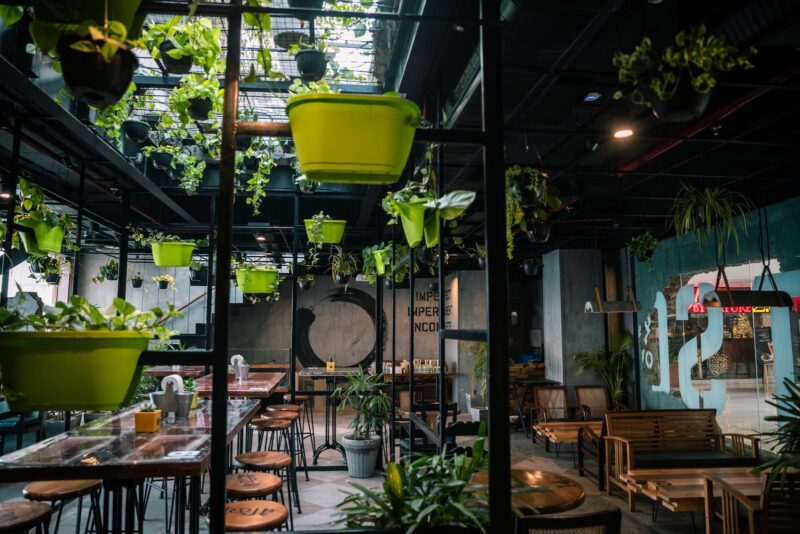
We’ve all heard the term “think globally, act locally.” That means that we should all do our part to help protect our environment and the inhabitants of our planet. As individuals, we do this daily by recycling and being conservative with our energy. However, that responsibility can also fall to business owners, including those who own restaurants.
There are many ways that a restaurant can do its part to be more eco-conscious. However, it’s hard to know where to start. It’s not simple to switch up restaurant policies and procedures to be friendlier to the environment, and you certainly don’t want to do anything that will harm the dining experience. Nevertheless, there are several benefits to going green, so here’s how to make your restaurant more environmentally friendly.
Use Local Ingredients When You Can
Imported foods or those from your region must travel long distances to get to you. Not only that, but they are transported in large, fuel-guzzling trucks that travel our roadways. Mass production of produce and animal products can also have a negative impact on the environment. By shopping locally as much as possible, you can cut down on the amount of food that is traveling a long way. This will conserve the use of fuel and even packaging products. Not only will you be doing your part in cutting carbon emissions, but you can also have financial benefits. Customers are more aware of their food choices, and many look for businesses that use eco-friendly practices like local shopping.
Cleaning Practices
Restaurants have to be kept to the highest standards of cleanliness. That means that there is someone cleaning something at pretty much all times. Unfortunately, when they do, they are often using harsh chemicals, a lot of water, and throwing out paper towels. These are all harmful to the environment. However, there are alternatives.
It can be hard to be eco-friendly when it comes to keeping your business sanitary. However, if you make an investment in time and some money, you can make it happen. For example, you can replace your paper towels with reusable clothes. You can also use homemade cleaning products as long as they have the anti-bacterial power that your health authority requires. There seem to be more and more green cleaning products on the market every day, so keep your eye out for changes you can make.
Energy Efficiency
Restaurants have a lot of appliances, all of which can use a lot of energy. However, you can reduce your energy usage by investing in efficient products and employing efficient habits. For example, you can switch your light bulbs to CFLs, which use less power and last longer. You can also install low-flow toilets to conserve water. Motion detector lights will ensure that nobody leaves lights on when a room is not in use or at the end of the night. Use your air conditioning only when it is absolutely necessary, and keep your appliances turned off when they are not in use.
Dishes and Takeout
Delivery and take-out are more popular than ever after so many shut-downs around the country and the world. Unfortunately, many restaurants use styrofoam or other harmful containers for their takeout, which only goes to landfill. However, some alternatives are not only eco-friendly but work better, too.
Bamboo plates and other products made from bamboo offer disposable options that are biodegradable. They disintegrate into the soil without causing any damage. They are sturdy and strong and can also be used to reheat food. If you only use them for dry goods, they can even be reused, but they work well with any type of food. You can have a thriving takeout aspect to your business while also adding as little as possible to your local landfill.
Water Conservation
Restaurants and their customers use a lot of water. Customers use the toilets and wash their hands. Staff wash dishes, use water for cooking, and use it for mopping and cleaning. With so much water being used, there are bound to be ways to cut down on it without affecting your operations. Using less water will not only help conserve the limited amount that we have available on earth but will also cut down on your utility bills.
For starters, install low-flow faucets in your bathroom and in your kitchen. These provide water more efficiently than traditional fixtures. You can also use waterless urinals in your bathroom, along with water-efficient toilets. You should be checking your pipes regularly for leaks as well. Many restaurants have also adopted the practice of only giving water to customers who request it instead of serving it and having full glasses left on tables. This also means you would clean fewer glasses, which would save water.
E-Receipts
One of the lesser-known ways that restaurants and businesses create waste is with receipts. Those little paper tags end up in landfill more often than not, or they end up littering our parking lots and green spaces. There’s no reason anymore to provide paper receipts. The vast majority of diners now have cell phones or at least an email address. Instead of giving them a paper receipt, offer to text or email the receipt. This not only cuts down on waste but also means that they are less likely to lose receipts in case they need them again. It also prevents staff from changing the rolls regularly, and you won’t have to worry about keeping them stocked up.
As you can see, there are many ways to be eco-friendly with your restaurant. Unfortunately, the fact is that restaurants are prime places for waste and environmentally unhealthy practices. Use these tips, and you will be green in no time.